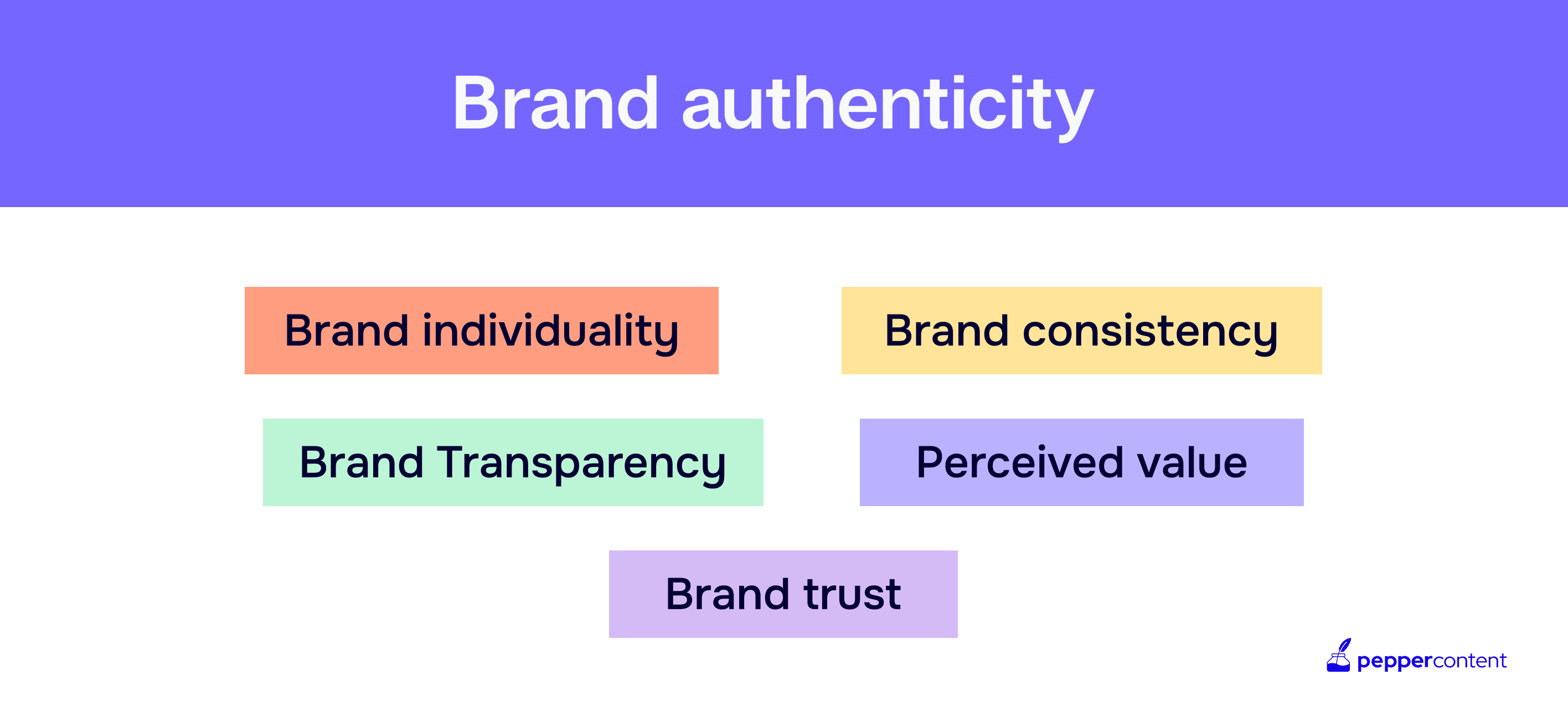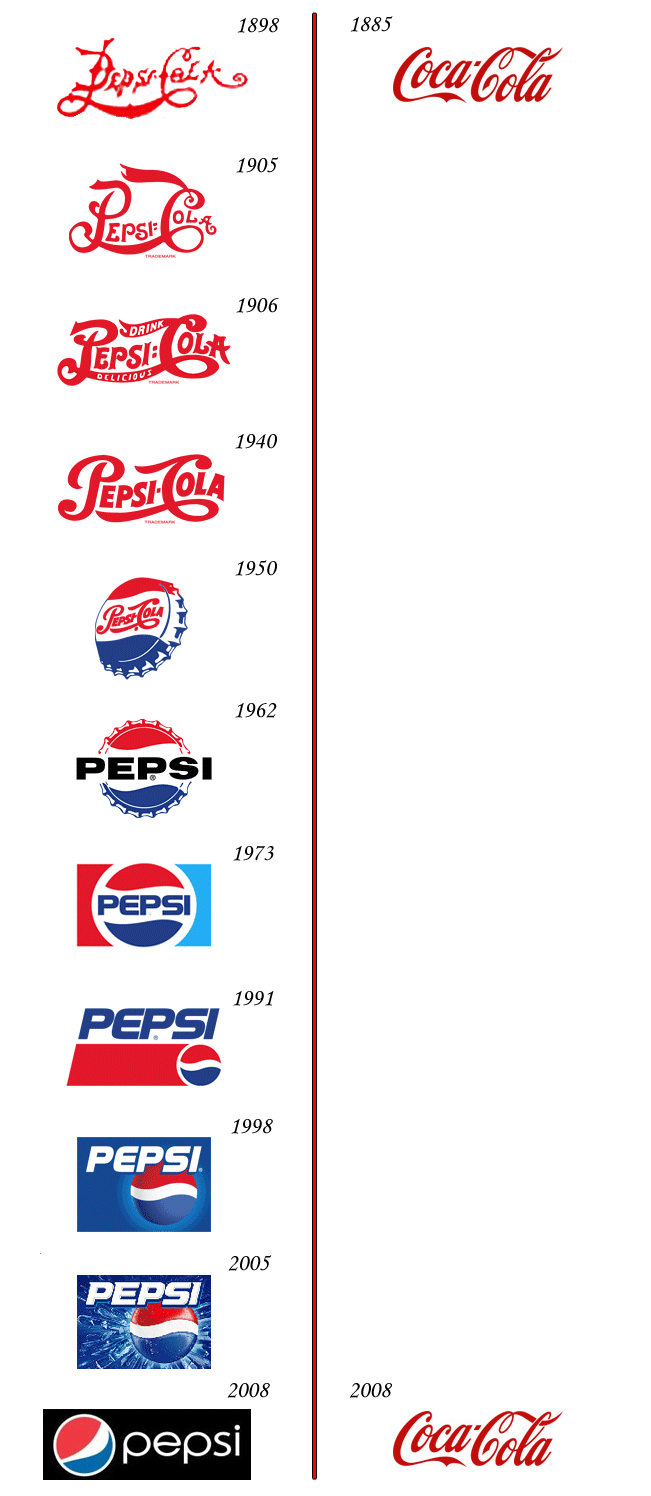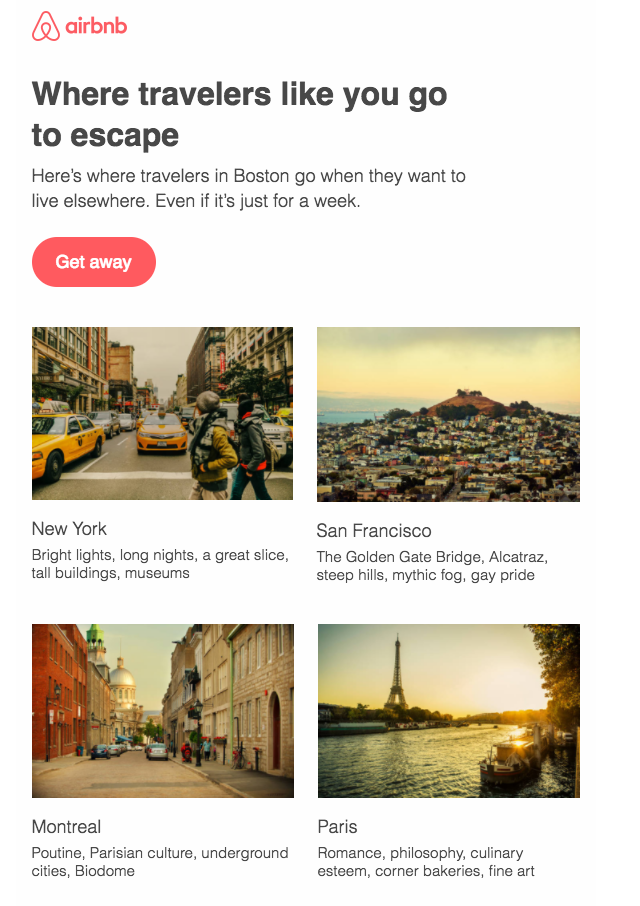Building Trust and Loyalty Through Brand Authenticity in Content Marketing

Authenticity is the secret sauce that makes content marketing truly effective. In a world saturated with information and advertisements, consumers crave genuine connections and experiences. Brand authenticity is the key to building trust, loyalty, and positive brand sentiment. When consumers perceive a brand as authentic, they are more likely to engage with its content, make repeat purchases, and become loyal advocates.
The article will educate marketers on the power of authenticity in content marketing and provide actionable strategies for building brand authenticity.
Understanding Brand Authenticity
In simple terms, it refers to how genuine consumers perceive a brand to be. It’s about being true to your brand’s values and consistently delivering on your promises.
To understand brand authenticity better, let’s break it down into its key components.
Transparency is one such component. Being transparent means being open and honest with your audience about who you are as a company, what you stand for, and how you operate. When consumers see transparency in action, they feel more connected to the brand and are more likely to trust it.
Consistency is another vital component of brand authenticity. Consistency means delivering a unified experience across all touchpoints, from your website to social media channels to customer service interactions. When a brand maintains consistency in its messaging, visuals, and overall brand identity, it reinforces its authenticity and builds trust with consumers.
Alignment with values is the third component of brand authenticity. Consumers today value brands that share their beliefs and stand up for the causes they care about. When a brand aligns its values with those of its target audience, it creates a sense of connection and resonates with consumers on a deeper level.
Brand authenticity research plays a crucial role in understanding consumer perceptions and preferences when it comes to authenticity. Numerous studies have shown the impact of authenticity on consumer behavior. For example, a survey conducted by Cohn & Wolfe found that 87% of global consumers felt that it was important for brands to act with integrity at all times.
Another study by Stackla revealed that 86% of consumers believe that authenticity is an important factor when deciding which brands they like and support. These findings highlight the importance of brand authenticity research to gain insights into consumer expectations and tailor content marketing strategies accordingly.

Building Brand Authenticity
A. Defining Your Brand Identity
To build brand authenticity, it is crucial to have a clear and well-defined brand identity. Your brand identity encompasses your values, mission, vision, and personality. It sets the foundation for how your brand will be perceived by your audience.
Take, for example, Apple. Their brand identity revolves around innovation, simplicity, and elegance. From their sleek logo design to their minimalist product designs, Apple consistently portrays their brand identity. This clarity in their identity creates a sense of trust and authenticity among their consumers.
When defining your own brand identity, consider what makes your brand unique and compelling. What values do you stand for? How do you want to be perceived by your audience? By answering these questions, you can establish a clear brand identity that aligns with your target market’s preferences and aspirations.
B. Crafting Genuine Messaging
Authenticity should be reflected in all of your communications. From social media posts to website content and advertisements, using an authentic voice is crucial to building trust with your audience.
One brand that has mastered the art of crafting genuine messaging is Dove. Their ‘Real Beauty’ campaign challenges traditional beauty standards and promotes body positivity. By addressing real issues faced by its target audience, Dove has built a strong emotional connection with consumers and earned their trust.
When crafting your messaging, focus on being relatable and genuine. Understand the concerns and desires of your target audience and address them authentically. Avoid using generic marketing jargon or empty promises; instead, offer real value that resonates with your audience’s emotions and aspirations.

C. Delivering Consistent Experiences
Consistency is key when it comes to building brand authenticity. Your branding should be consistent across all touchpoints, including your website, social media channels, packaging, and customer service.
A prime example of consistent branding is Coca-Cola. The iconic red and white logo, the classic glass bottle design, and the nostalgic Christmas advertisements all contribute to Coca-Cola’s consistent brand experience. Consumers know what to expect from the brand, and this reliability builds trust and loyalty.

To deliver consistent experiences, ensure that your visual elements are aligned with your brand identity. Use the same color palette, typography, and tone of voice across all platforms. Train your employees to embody your brand values in their interactions with customers. Consistency reassures your audience that you are true to your word and helps build a strong sense of authenticity.
Harnessing Social Media for Authentic Engagement
Social media has become an integral part of our lives, and it presents a unique opportunity for brands to connect with their audience on a deeper level. When it comes to building brand authenticity, social media can be a powerful tool. In this section, we will explore how businesses can harness social media for authentic engagement.
A. Leveraging User-Generated Content (UGC)
UGC is any form of content created by consumers rather than brands. It includes reviews, testimonials, social media posts, and more. UGC plays a significant role in building credibility and authenticity for brands.
When consumers see real people using and enjoying a product or service, they are more likely to trust the brand. According to a survey by Stackla, 79% of people say UGC highly impacts their purchasing decisions. Moreover, UGC generates 6.9 times higher engagement compared to brand-generated content.
Brands like GoPro have successfully leveraged UGC in their content marketing strategies. They encourage their customers to share photos and videos taken with their cameras using the hashtag #GoPro and #GoProBR.

B. Engaging in Conversations
In today’s digital age, social media has become a powerful platform for brands to connect and engage with their audience. One of the key ways to build authenticity in content marketing is by actively participating in conversations with customers on social media. This interaction allows brands to humanize themselves, demonstrate their values, and build trust and loyalty with their audience.
By actively engaging in conversations, brands can show that they genuinely care about their customers’ opinions and feedback. This can be done by responding to comments, addressing queries, acknowledging praise, and even handling criticism gracefully. These interactions not only help strengthen the brand-customer relationship but also provide valuable insights into customer needs and preferences.
An example of effective social media engagement is seen in the way Airbnb responds to customer inquiries on Twitter. They go beyond simply answering questions and take the opportunity to provide personalized recommendations or suggestions based on the customer’s interests or location. This level of personalized engagement not only adds value to the customer’s experience but also showcases Airbnb as a brand that truly cares about its users.

C. Transparency and Authenticity on Social Media
Transparency and authenticity are not just buzzwords when it comes to social media. In fact, they are essential elements for building trust and loyalty with your audience. Today’s consumers are more discerning than ever, and they can quickly detect inauthenticity in brands.
One of the most effective ways to showcase transparency and authenticity on social media is by being open about your brand’s values, beliefs, and practices. This means being honest about your successes and failures, sharing behind-the-scenes glimpses into your operations, and openly addressing any customer concerns or issues. By doing so, you show your audience that you have nothing to hide and that you genuinely care about their satisfaction.
A great example of a brand that embraces transparency on social media is Patagonia. This outdoor clothing company has always been committed to environmental sustainability. On their social media platforms, they openly share their efforts in reducing their carbon footprint, supporting conservation projects, and even encouraging customers to repair their worn-out Patagonia gear instead of buying new ones. Their transparent approach has earned them a loyal following who appreciate their commitment to their values.
Fostering Long-Term Relationships
A. Building Trust Through Customer Support
Exceptional customer support plays a vital role in fostering trust and loyalty with your audience. When customers know that they can rely on your brand to resolve any issues or answer their questions promptly, it builds a strong foundation of trust. Companies like Zappos and Amazon are renowned for their exceptional customer support, going above and beyond to ensure customer satisfaction.
By prioritizing customer support, these brands have not only gained loyal customers but also positive word-of-mouth recommendations, further strengthening their authenticity.
B. Personalization and Tailored Experiences
In today’s highly competitive marketplace, personalization is no longer a luxury but a necessity. By tailoring experiences to individual customers’ needs and preferences, brands can establish a deeper connection and foster long-term relationships.
Netflix is a prime example of personalization done right. With its algorithm-driven recommendations and curated content based on users’ viewing history, the streaming giant creates a personalized experience that keeps its subscribers engaged and coming back for more.
However, personalization goes beyond just product recommendations. Brands can also personalize their communications by addressing customers by name, sending personalized emails based on their browsing behavior, or even offering exclusive discounts on their birthdays.
Remember, building brand authenticity is not an overnight process but rather an ongoing commitment to consistently delivering value to your audience. By investing time and effort into understanding your brand identity, crafting genuine messaging, harnessing social media for authentic engagement, and fostering long-term relationships through exceptional customer support and personalization, you can build a strong foundation of trust and loyalty that will set your brand apart in the content marketing landscape.
So, embrace building brand authenticity as a long-term strategy and watch as it becomes a powerful tool in your content marketing arsenal. The rewards of building trust, loyalty, and brand affinity will far outweigh the short-term gains of immediate sales. Start building your authentic brand today and unlock the true power of authenticity in content marketing.
Latest Blogs
Explore how Google’s 2025 AI search updates triggered ranking chaos. Learn actionable strategies to adapt your SEO for AI Overviews, zero-click searches, and SERP volatility. Stay ahead now.
Learn how to rank on AI search engines like ChatGPT, Perplexity, and Gemini by optimizing your content for authority, structure, and relevance. Stay ahead in AI-driven search with this strategic guide.
Explore the best healthcare SEO services for your medical practice. Improve online visibility and effectively reach more patients in need of your services.
Get your hands on the latest news!
Similar Posts

Content Strategy
5 mins read
Choosing The Best Healthcare Marketing Agency For Effective Content Solutions

Content Marketing
4 mins read
Top 10 Agencies B2B SaaS Content Marketing for B2B Success

B2C Marketing
5 mins read